By David Jen
A Stockholm-based startup will soon test the waters of an untapped source of clean energy at the Port of Los Angeles in California’s San Pedro Bay.
Eco Wave Power, which has pioneered wave-power installations in Israel and Gibraltar, unveiled plans this year for a pilot wave-power project that will, in coming months, extract power from ocean waves at the AltaSea campus — within the Port of Los Angeles — to generate electricity. The pilot will be Eco Wave’s first in the United States.
(The nonprofit AltaSea advances blue-economy sustainability solutions through business innovation and job creation on its 35-acre campus.)
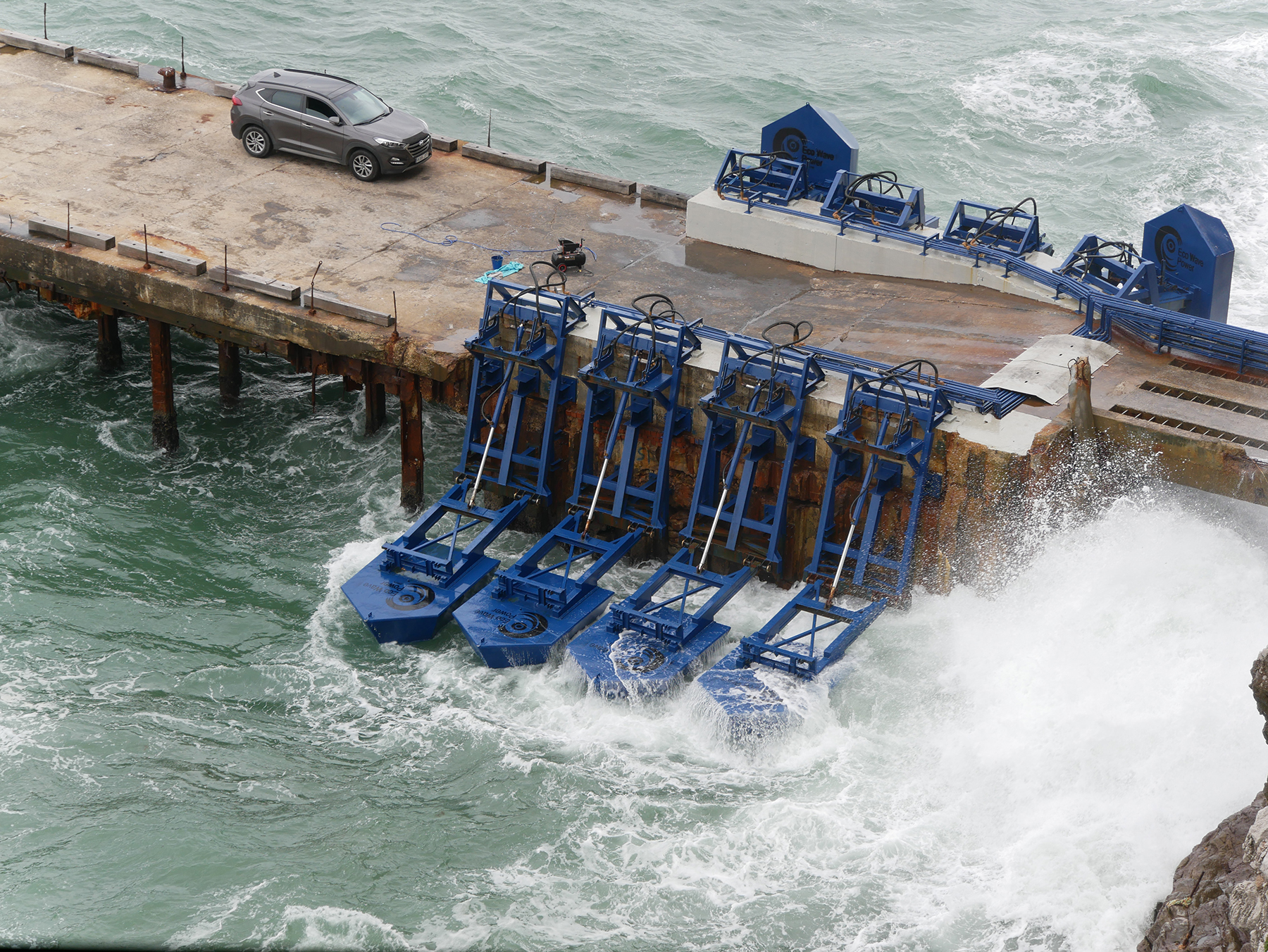
“Wave power is the least intermittent source of renewable energy,” says Eco Wave founder and CEO Inna Braverman. “As such, wave energy can be used to stabilize other renewable energy sources, such as wind and solar, thus creating stable renewable energy generation.”
Carbon-free, ocean-wave energy could have supplied about 64% of the country’s utility-scale generated electricity in 2021, had we had the means to capture it, according to the U.S. Energy Information Administration, which compiles independent information on how energy interacts with the economy and environment.
“You can think of waves as concentrated solar and wind power in some ways,” says Michael Lawson, Ph.D., group research manager of the National Renewable Energy Laboratory water power research and development group. “What I mean by that is the sun creates wind, and wind creates waves. So low-density wind and solar energy that are distributed over very large areas become concentrated into ocean waves.”
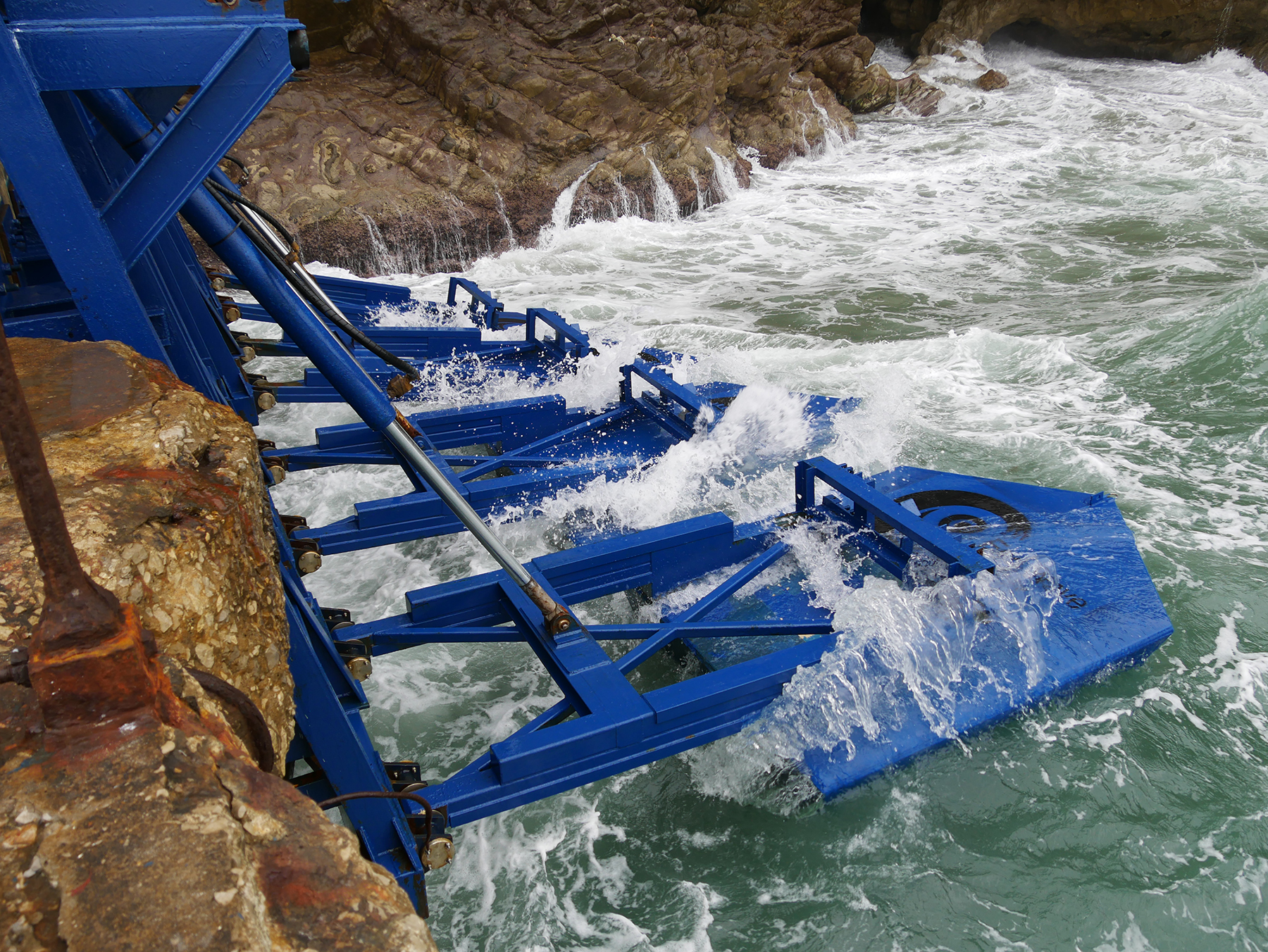
Consisting of floating paddles mounted to piers or wharfs, Eco Wave’s technology generates power from waves as small as 0.5 m high. As incoming waves move the paddles up and down, they add pressure to a hydraulic system that, in turn, drives a generator to produce electricity.
With eight paddles, each about the size of a small car, the Los Angeles pilot project will take up about 21 m of wharf frontage, while its energy-conversion unit will sit inside a standard shipping container. The system will provide an installed power capacity of 100 kW per hour, enough to potentially power about 80 average homes, although the actual generated power will depend on wave heights and periods.
Because the Eco Wave paddles leverage existing jetties and breakwaters, the project chose the Port of Los Angeles to demonstrate the technology for potential deployment at other developed ports along the West Coast, says AltaSea director of advancement Robin Aube.
The pilot project will be installed along the port’s main channel but clear of shipping traffic.
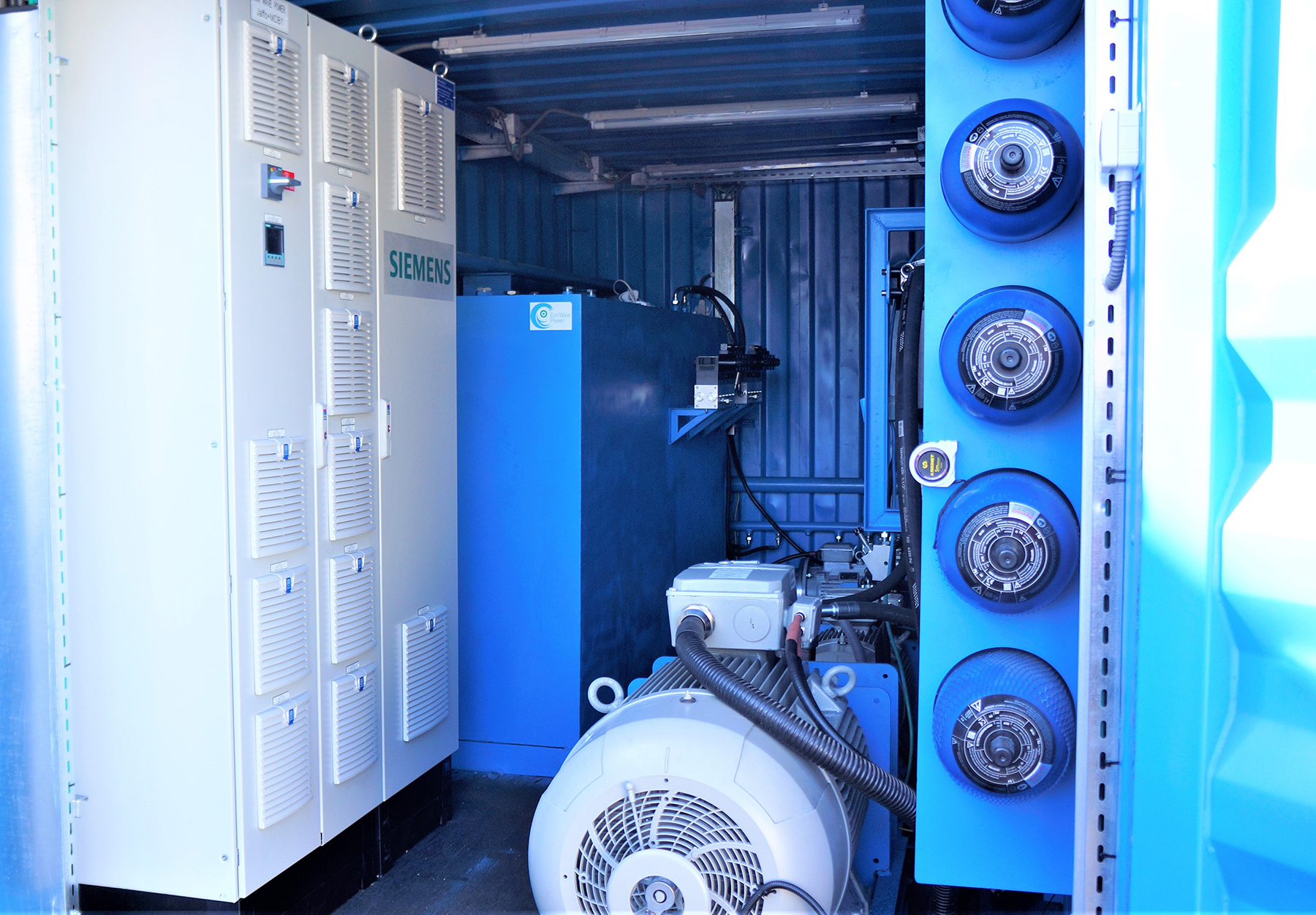
False starts
Despite the enormous amount of potential wave energy in the world — the west coasts of the United States and Europe along with the coasts of Japan and New Zealand all have prime wave energy sites, according to the EIA — the industry has experienced its share of false starts, with many projects falling victim to seawater corrosion and open-sea storms.
High-profile wave-energy mishaps, such as the collapse of the deepwater wave-energy company Pelamis in 2014, have left investors and insurance companies wary of the industry, says Braverman. A bidirectional turbine of another wave-energy venture, Oceanlinx, suffered damage while under tow to its intended site, also in 2014. The wreckage sat for seven years off the southern Australian coast as a visible, 3,000-metric-ton reminder that the technology was not quite there yet.
“The marine energy industry went too big, too fast and built really, really big machines before the technology was ready to be deployed at large scale,” says Lawson. “What you’ve seen happen since the failures of some of the early companies in the late 2000s and early 2010s is that the industry has started to focus on design optimization and proving technologies at smaller scales. This has allowed the industry to become more nimble, quickly improve designs, and work towards entering early adopter markets that will open larger grid-scale opportunities when the technologies are ready.”
While many wave-energy developers pursued offshore installations 4-5 km out to sea in the past, that choice necessitated long and expensive underwater transmission cables along with ships and divers to install and maintain the equipment, explains Braverman. Larger waves offshore also proved too much for many projects, destroying equipment, raising insurance costs, and ultimately rendering projects financially infeasible.
“Let's say you wanted to replace a bolt on land; it costs a dollar,” says Kelley Ruehl, M.S., ocean engineering subject matter expert in wave energy at Sandia National Laboratories. “You want to do it above the surface of the water offshore, you're talking $10. You want to do it underwater, $100. … Ask anyone who's spent extended periods of time on a boat or in the water, we've got a lot of energy there. You got storms. It's a challenging environment to work in.”
Braverman, however, believes that by focusing on shore-based solutions installed on preexisting structures such as jetties and breakwaters, wave power’s numbers can be made to tell a different story while also avoiding disturbances to the seafloor.
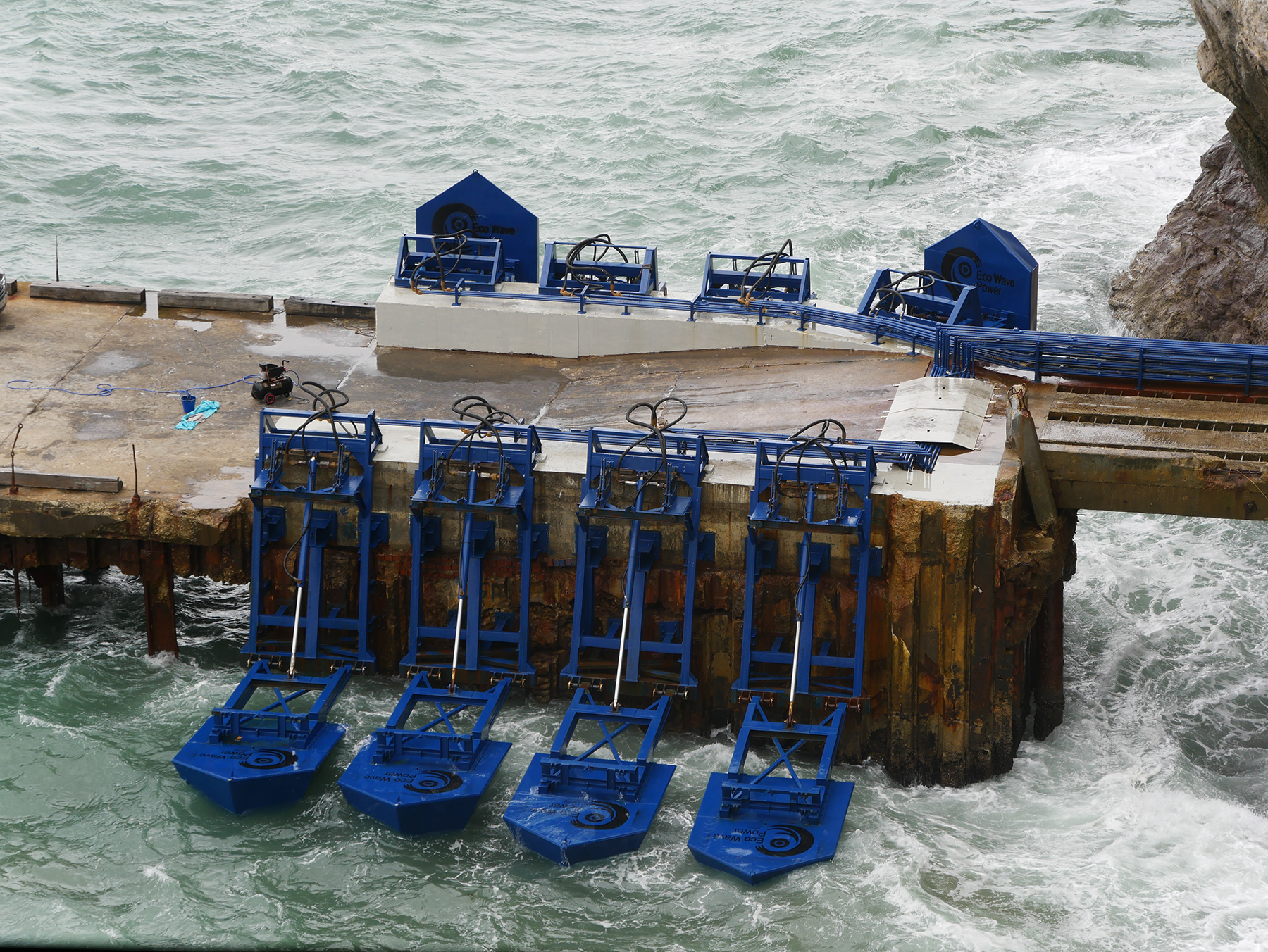
“In our view, in order to move the wave energy industry towards commercialization in the United States, Eco Wave Power will need its pilot to show that it overcomes the above-mentioned problems,” Braverman says.
Fitting in
In the larger scheme of decarbonization, wave power brings several valuable chips to the electricity-generation table.
Waves are less intermittent than wind and solar and even complement solar on a seasonal basis, peaking from the fall through the early spring, when solar energy is at its weakest. And because they are created over such large areas, waves often offer greater predictability than wind or solar with forecasts spanning days ahead.
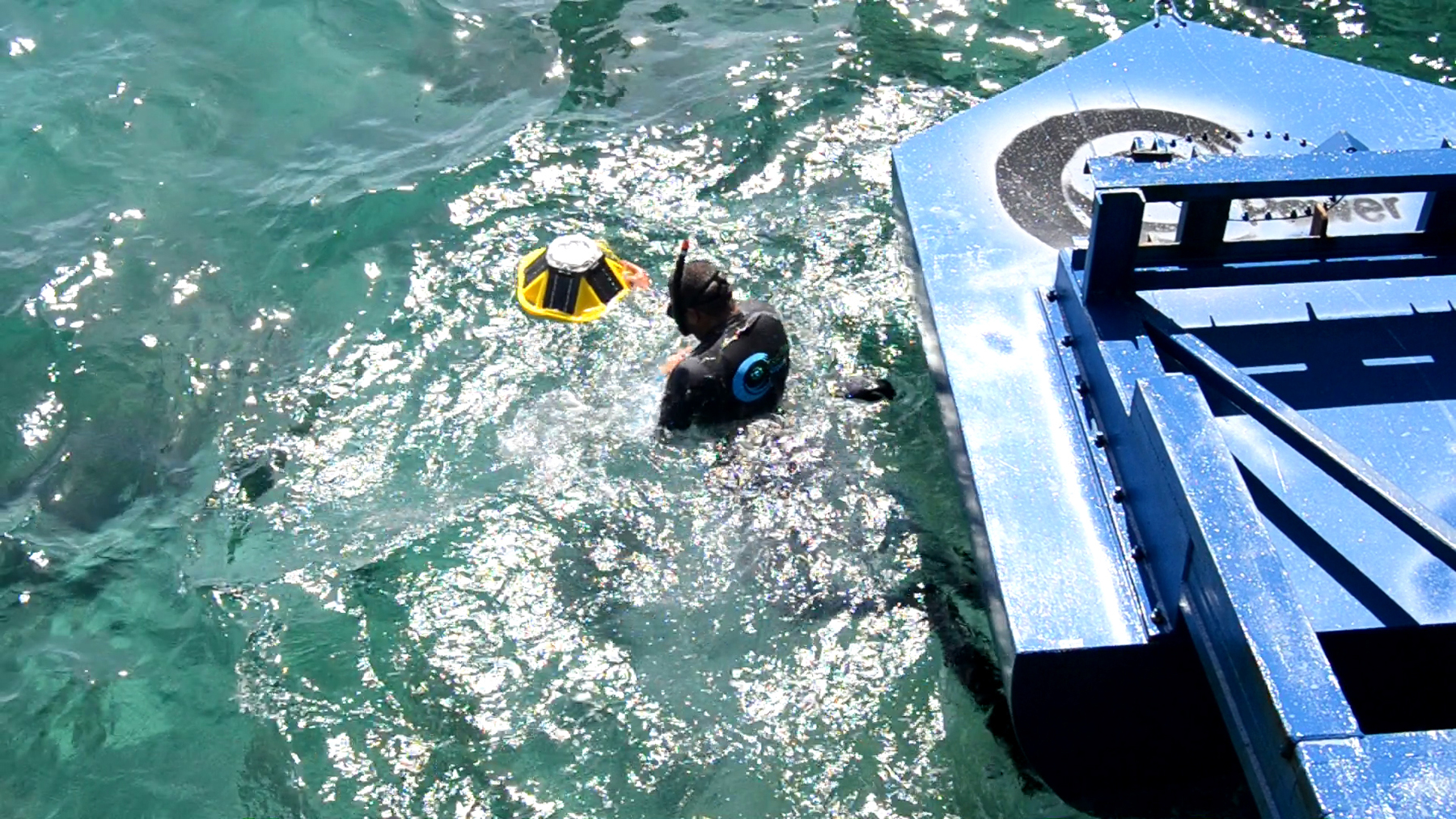
Braverman also adds that about 60% of the world’s population lives within 200 km of a coast, reducing the costs of delivering power generated on coasts.
“(Future electric power is) going to be a combination of a bunch of different generation sources,” says Ruehl. “I think it's very important that we consider the resource, the location, (and) the needs and find the right balance of those different generation sources with one another for the community in need.”
Following the pilot, Braverman says Eco Wave will pursue commercial-scale power stations in the U.S.
This article is published by Civil Engineering Online.



